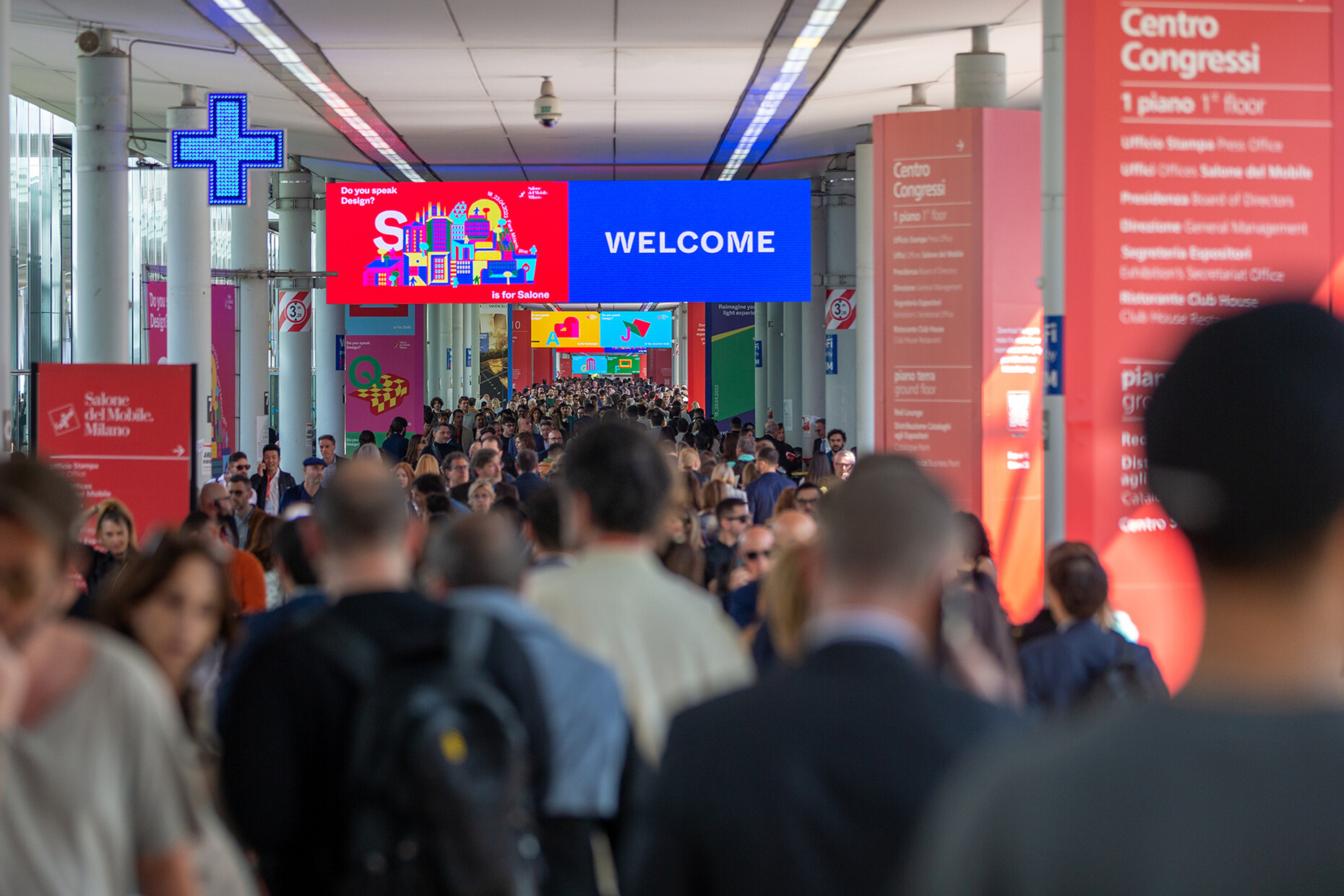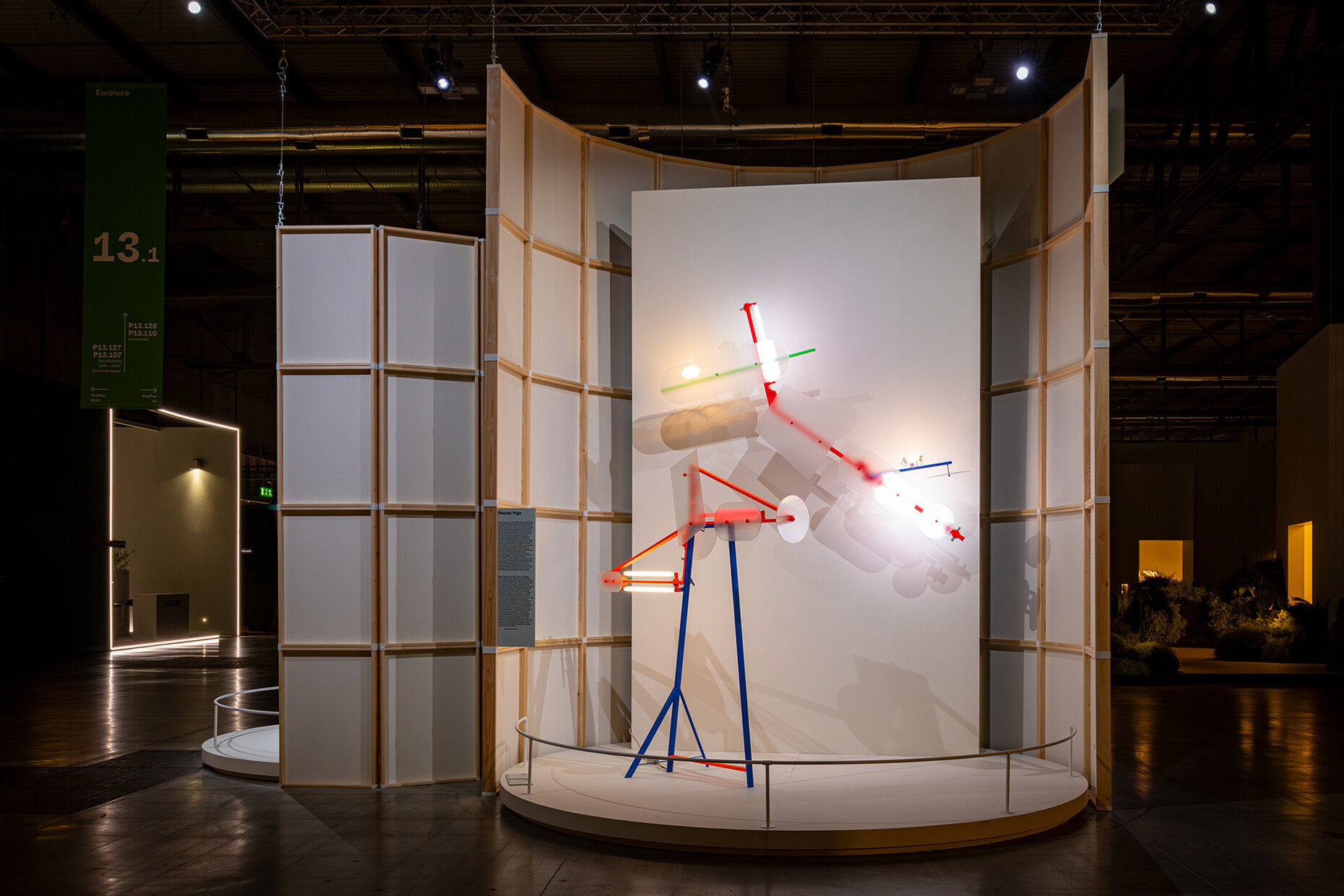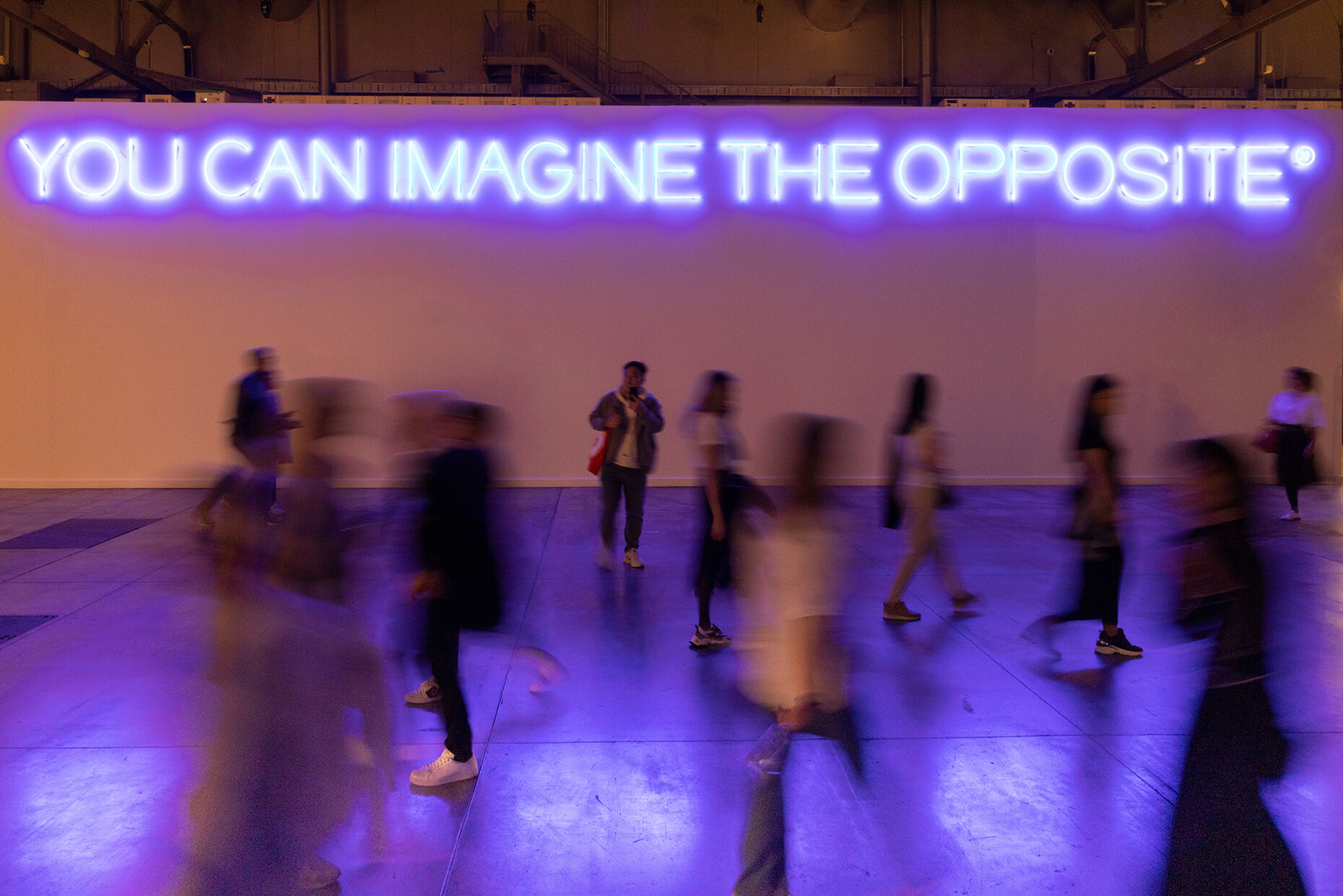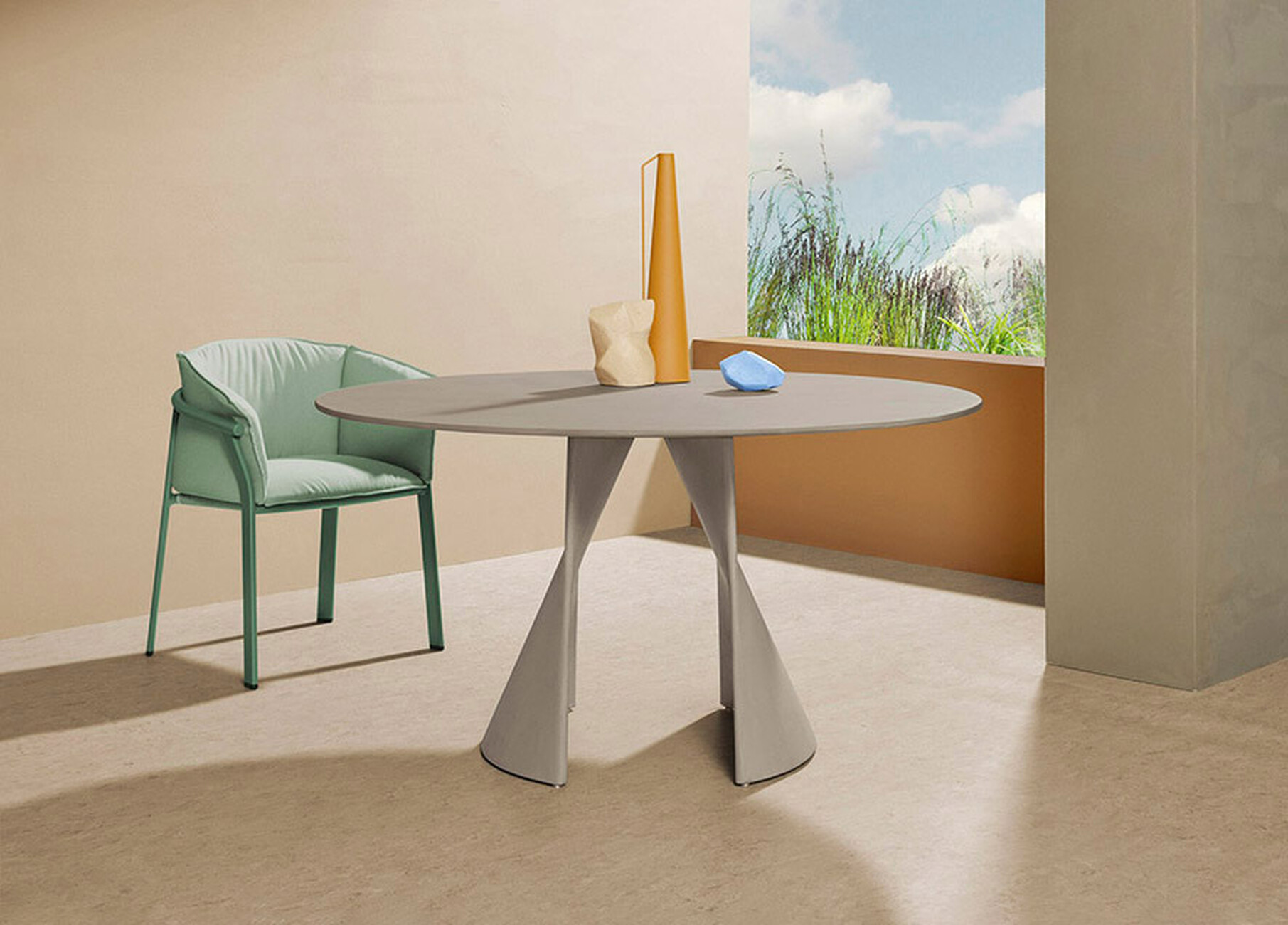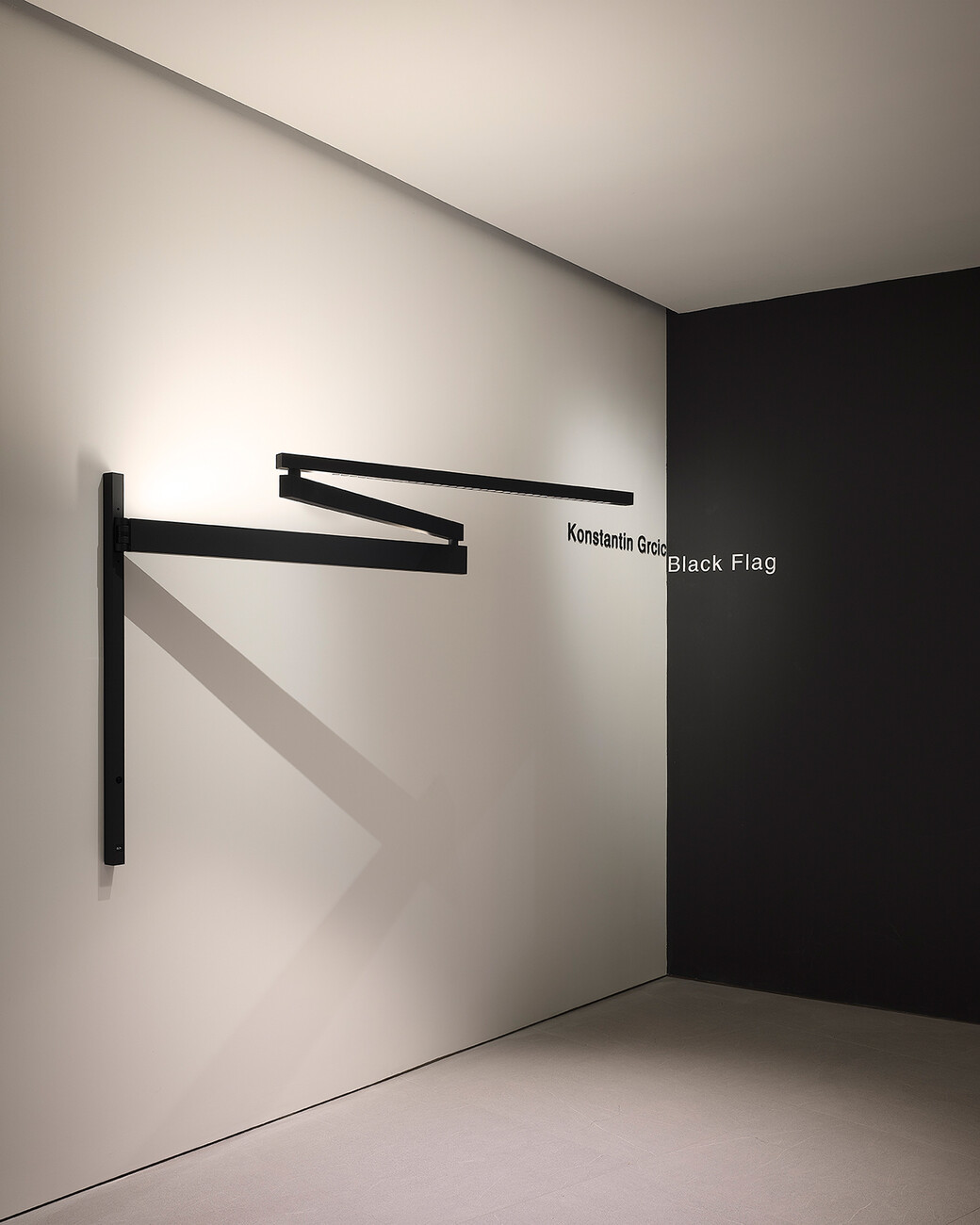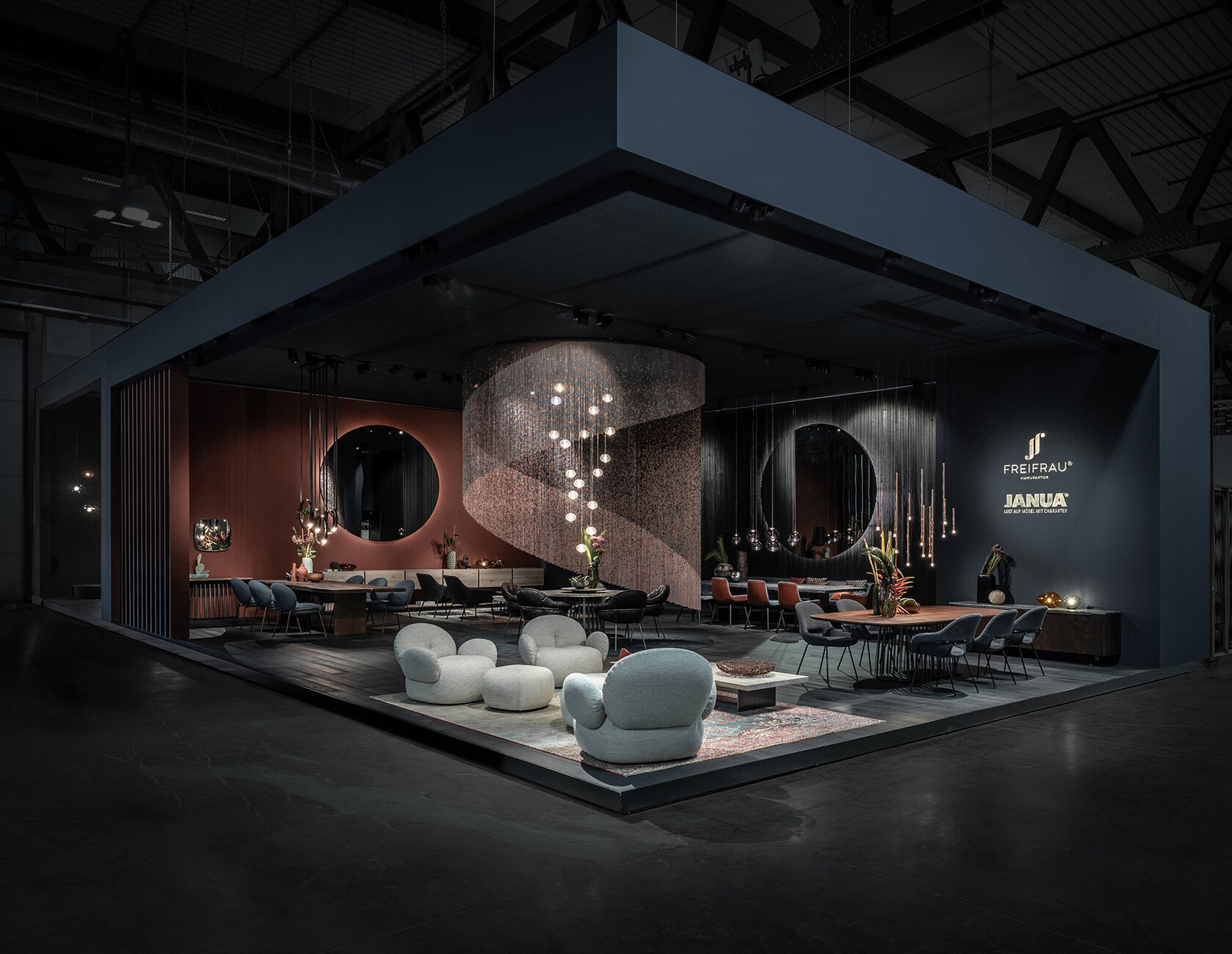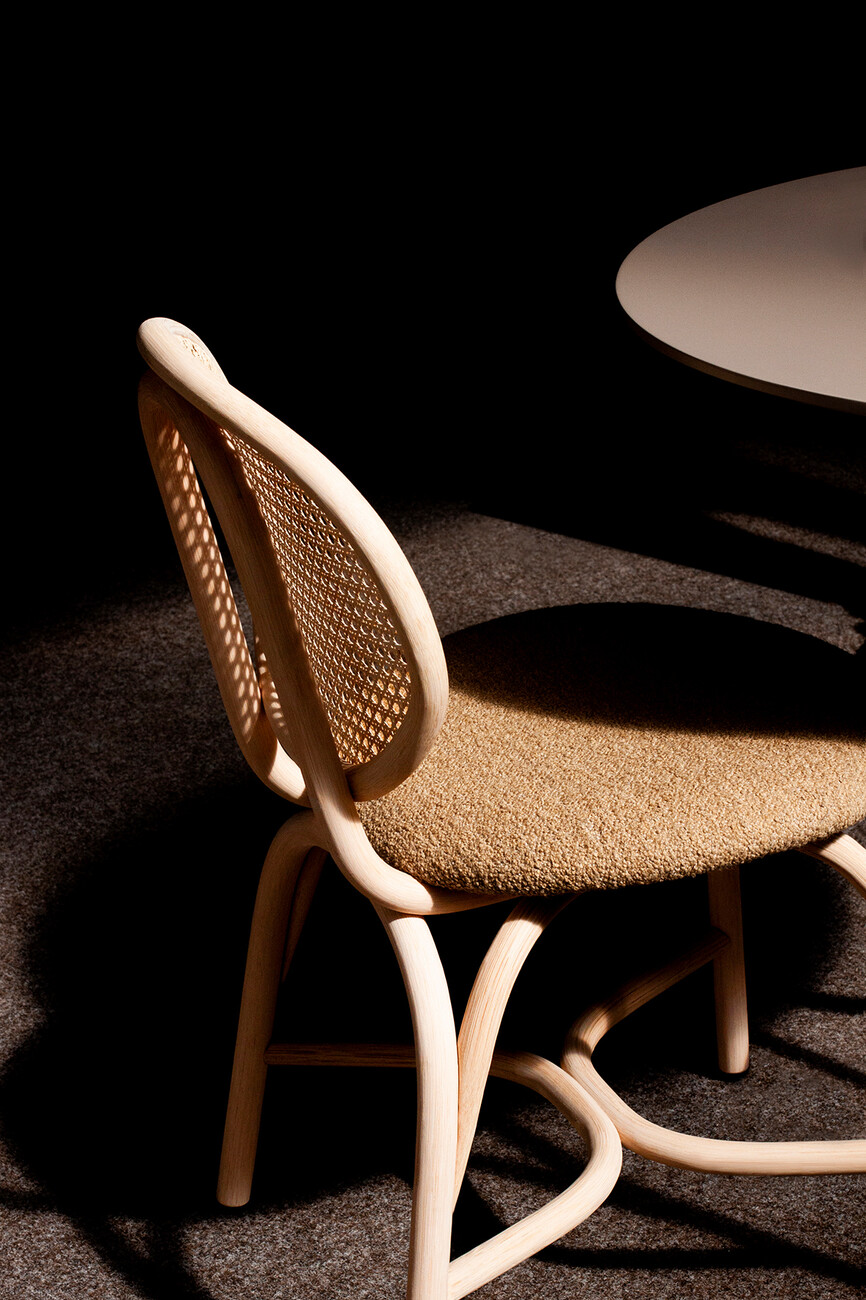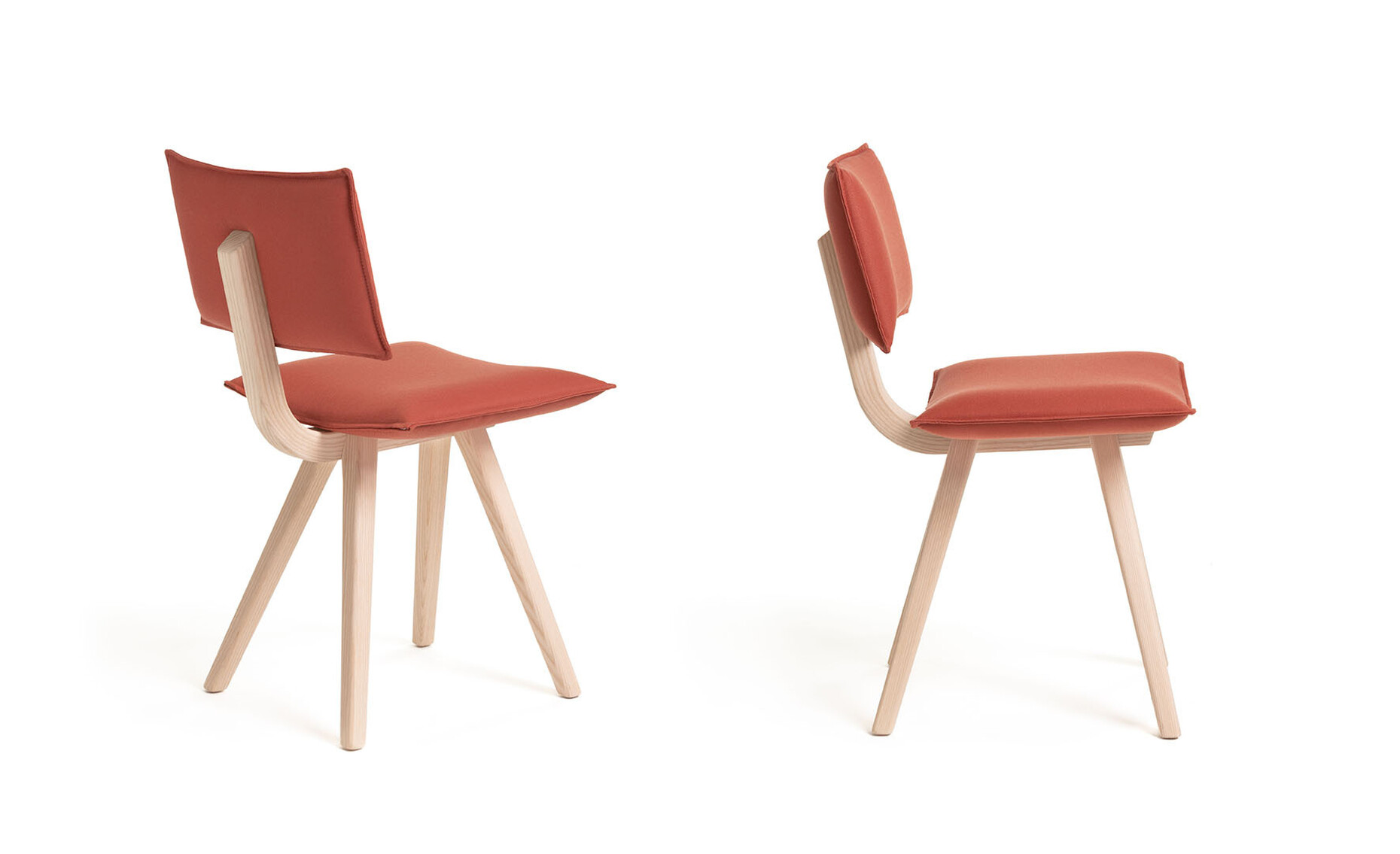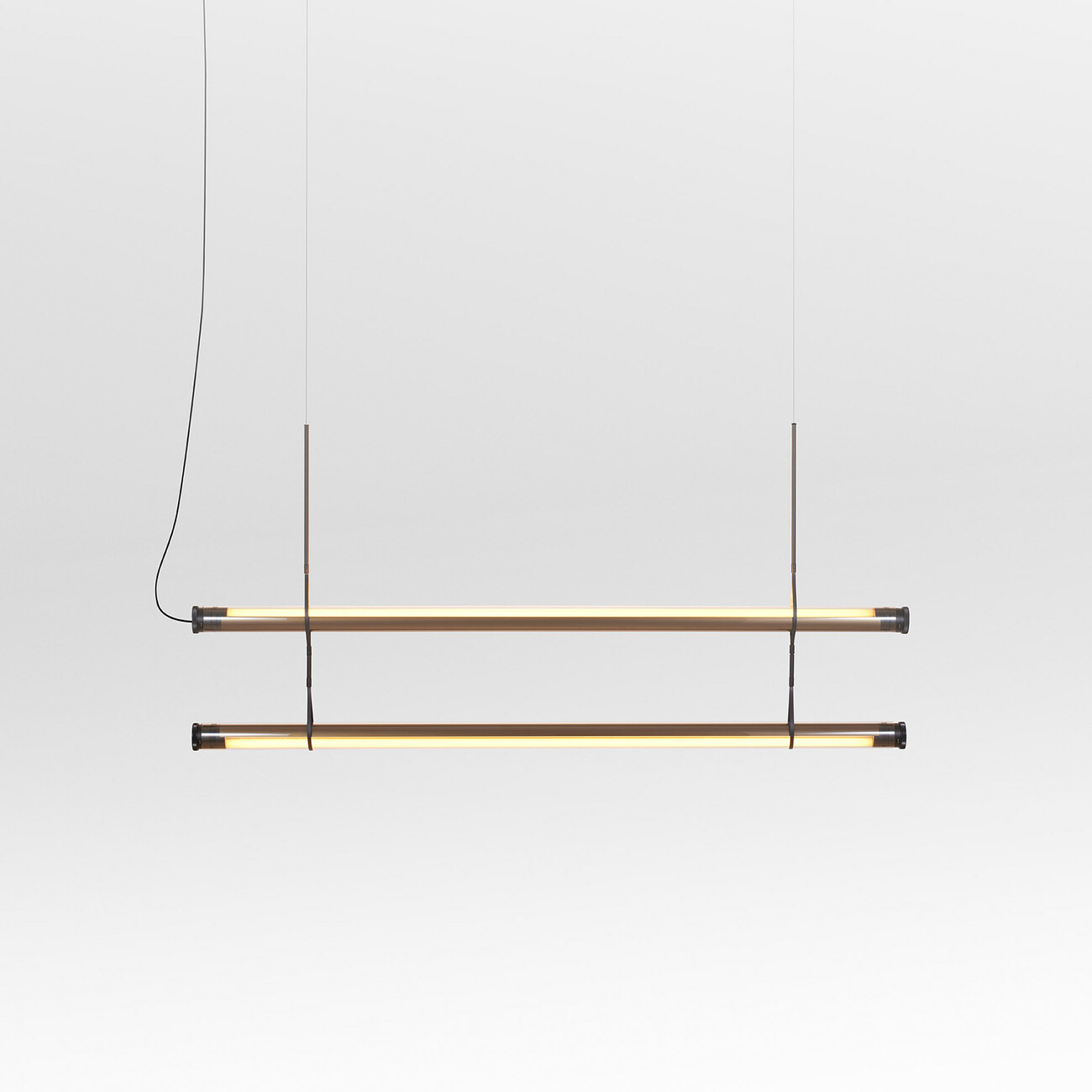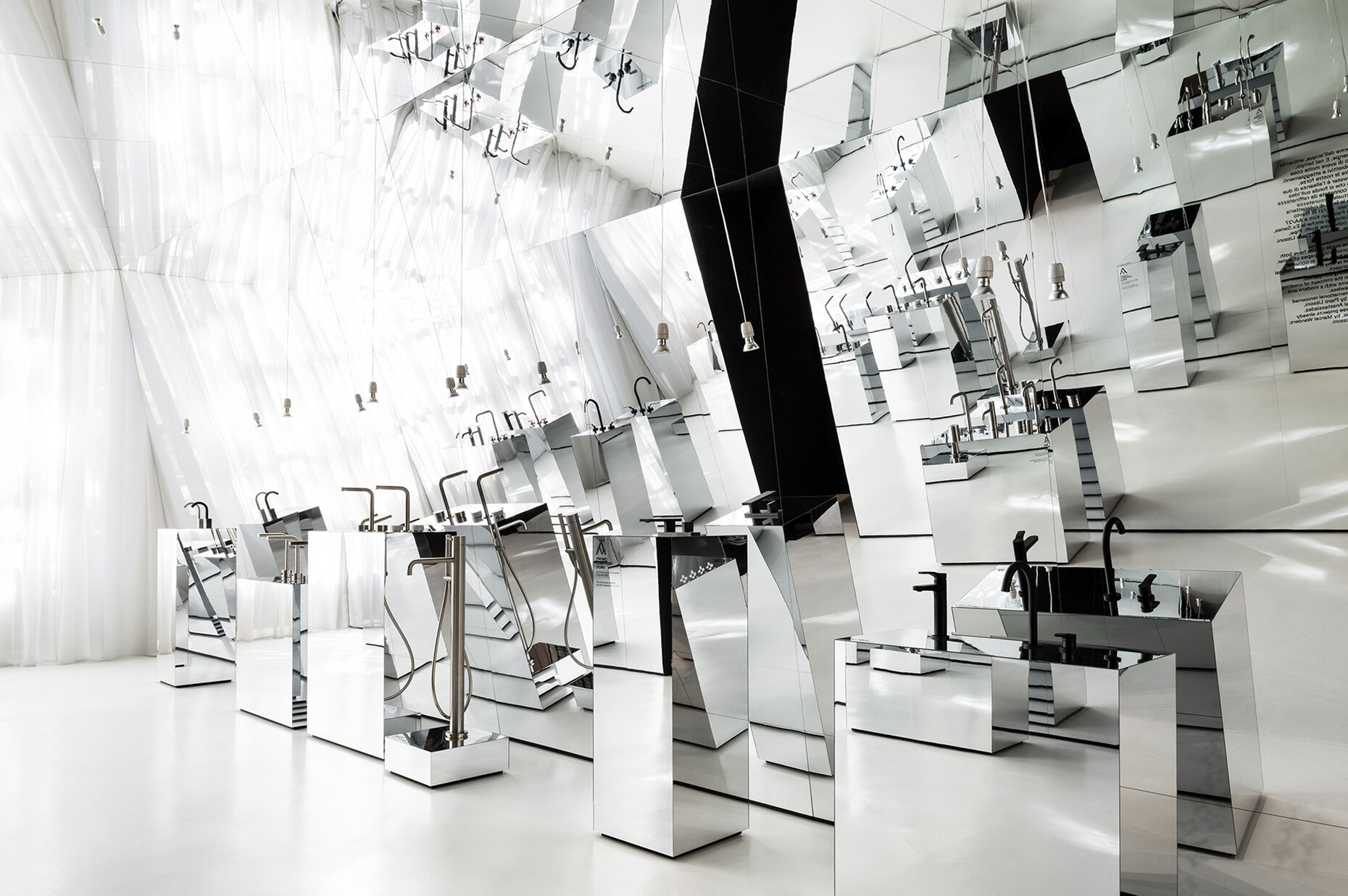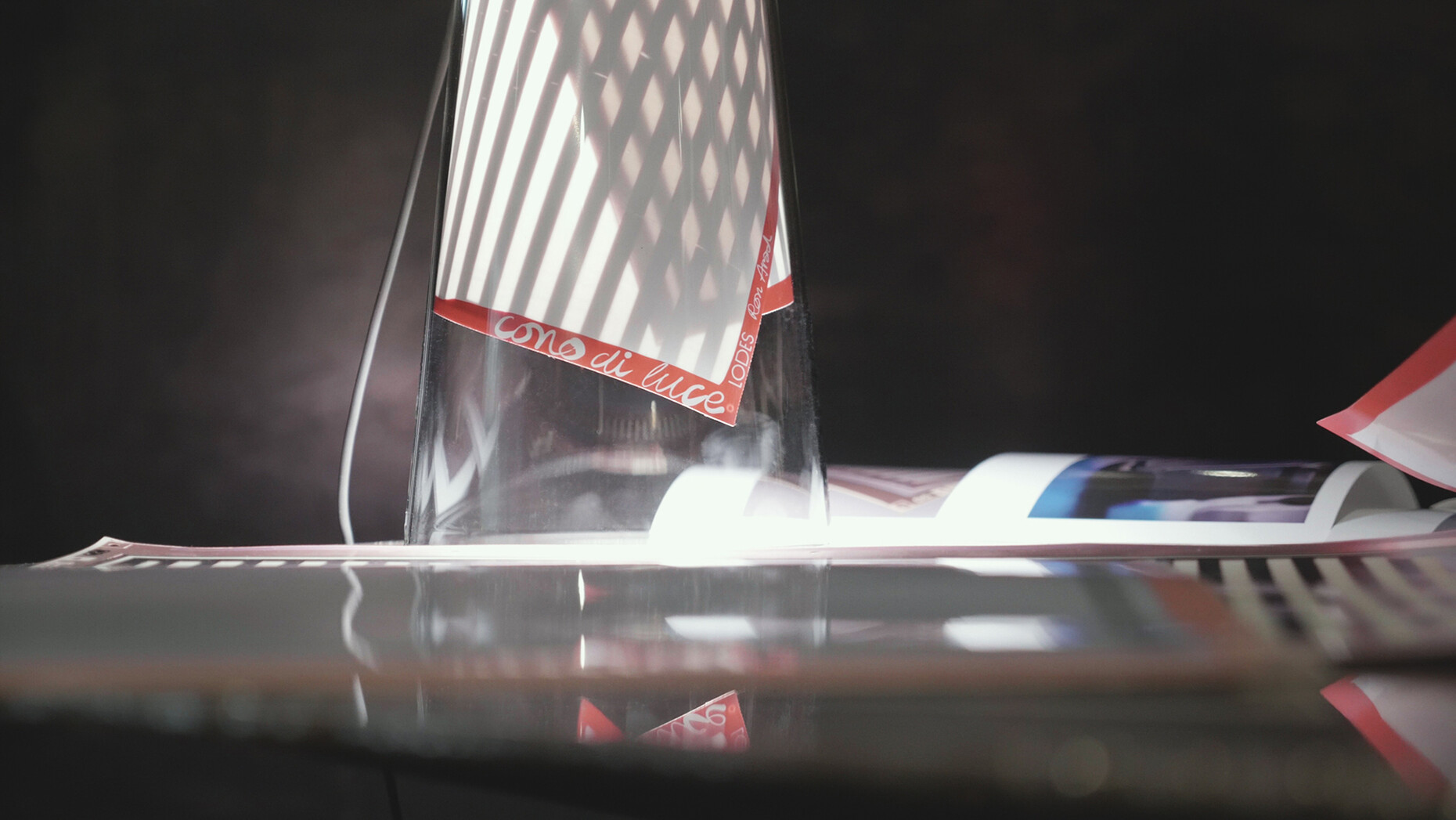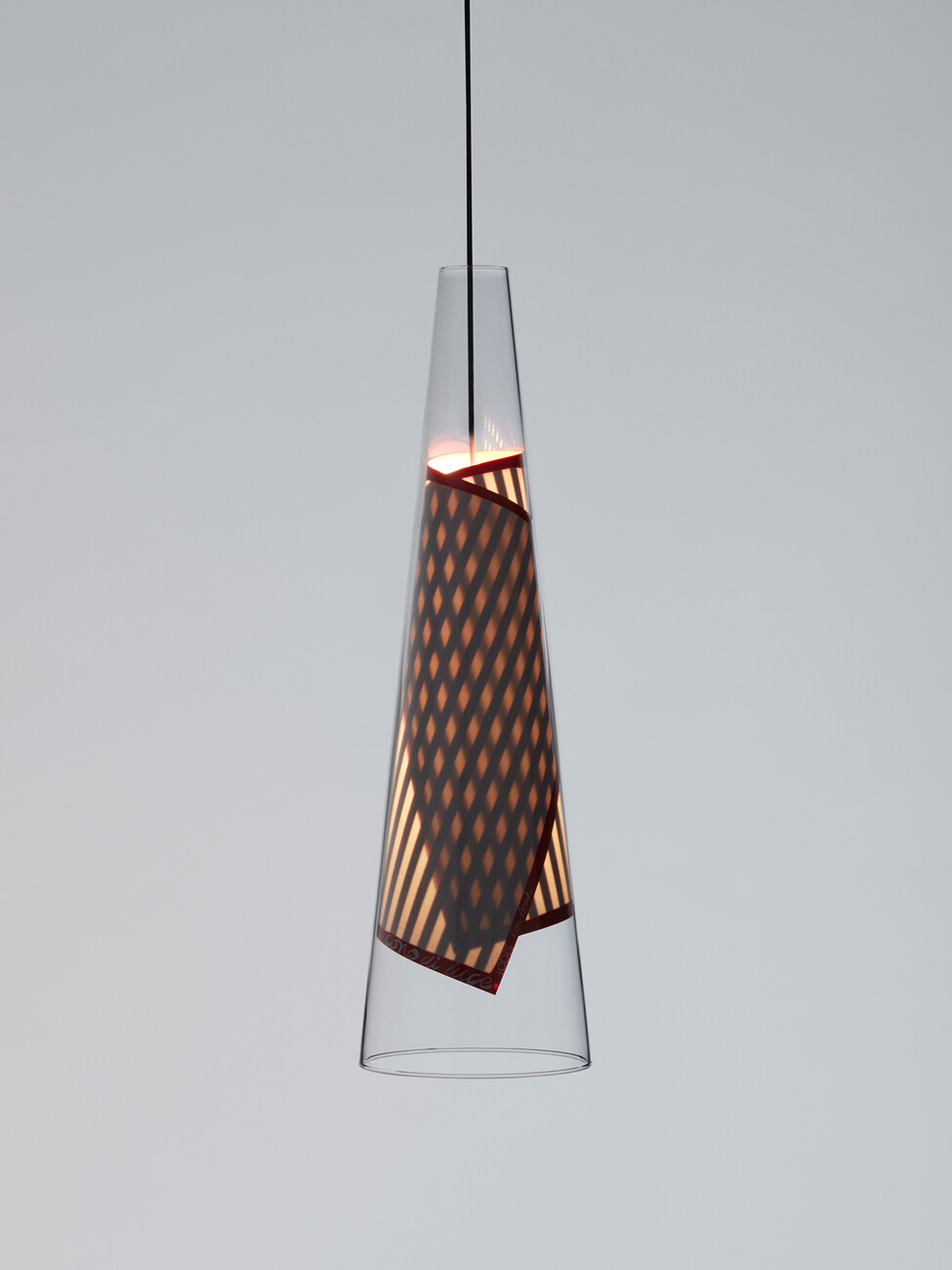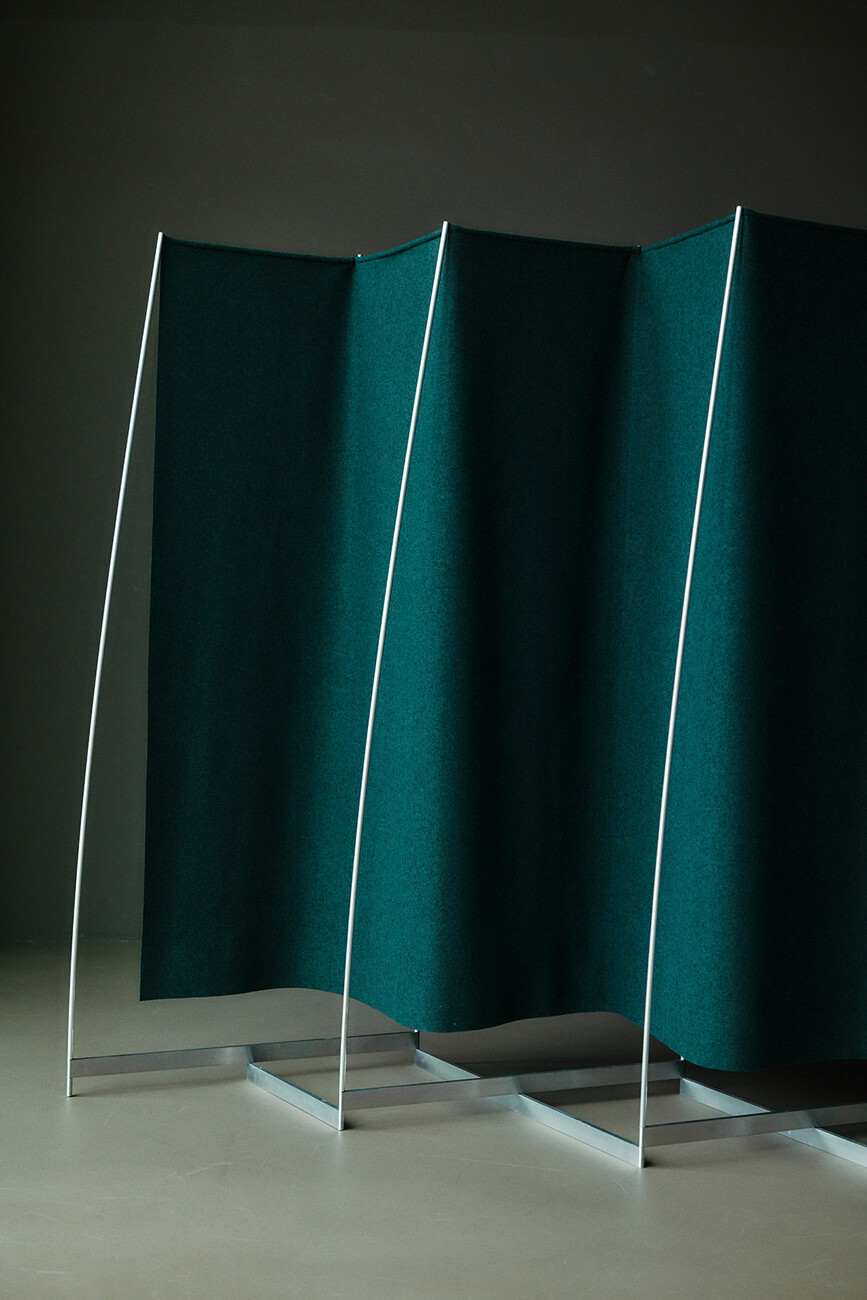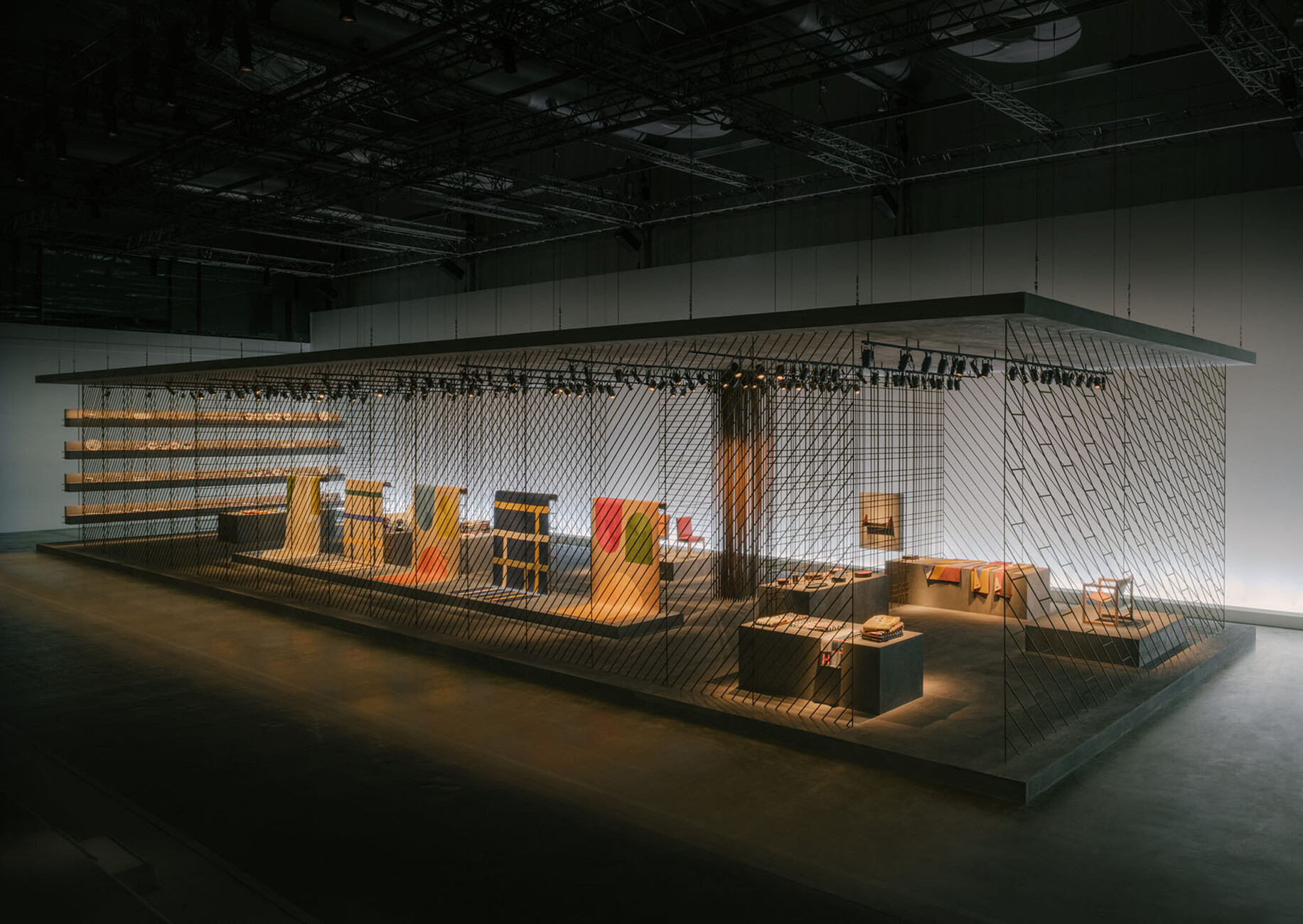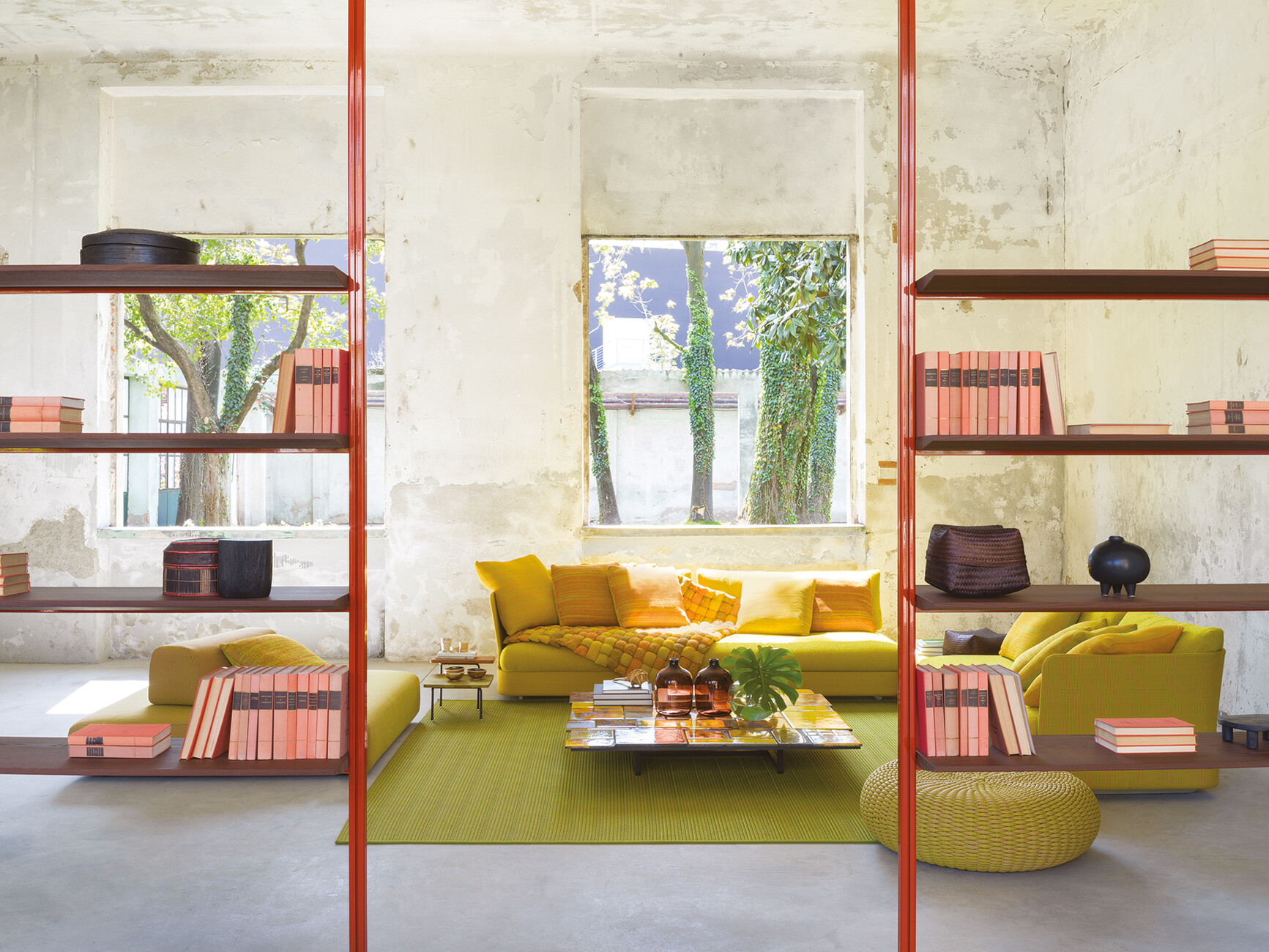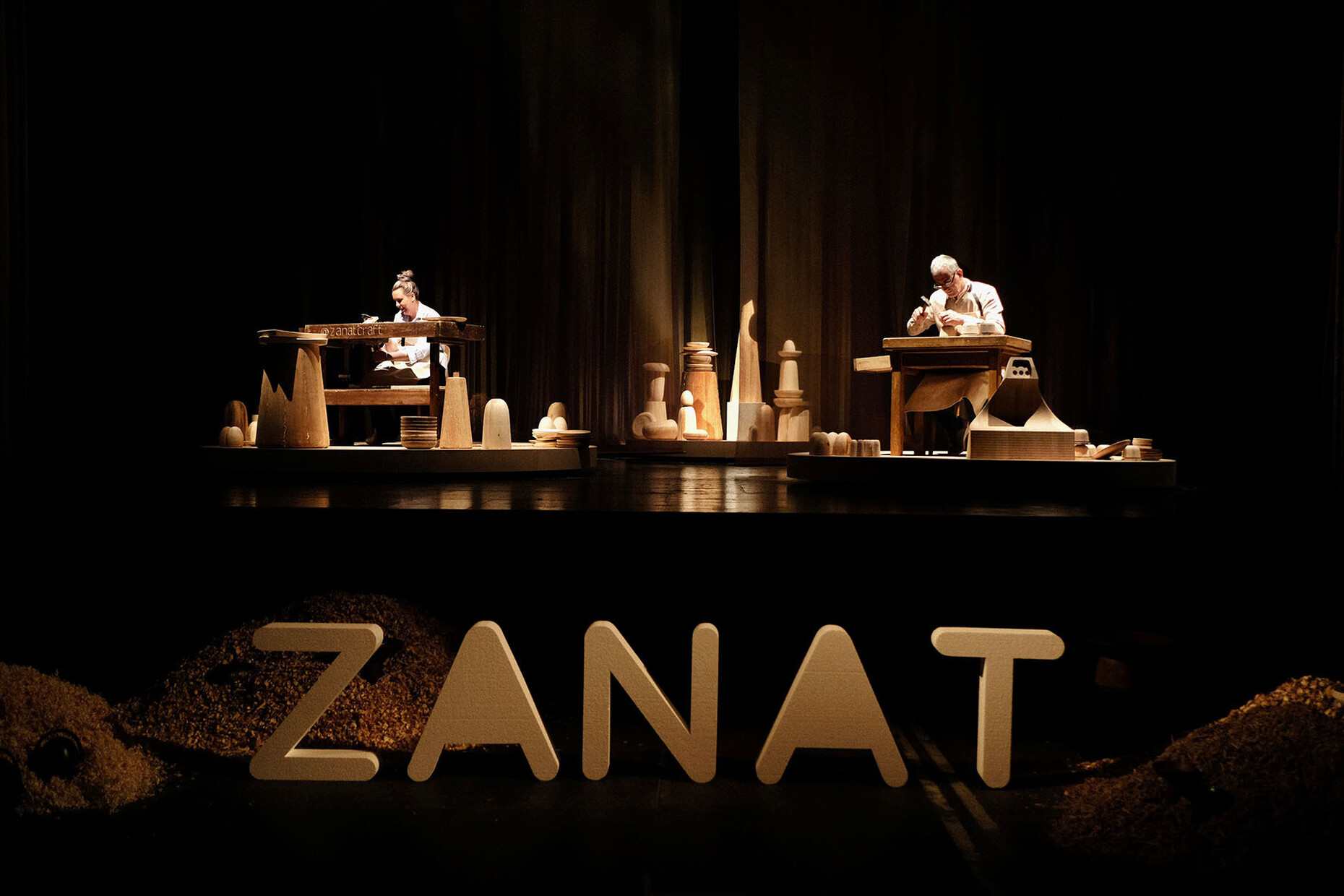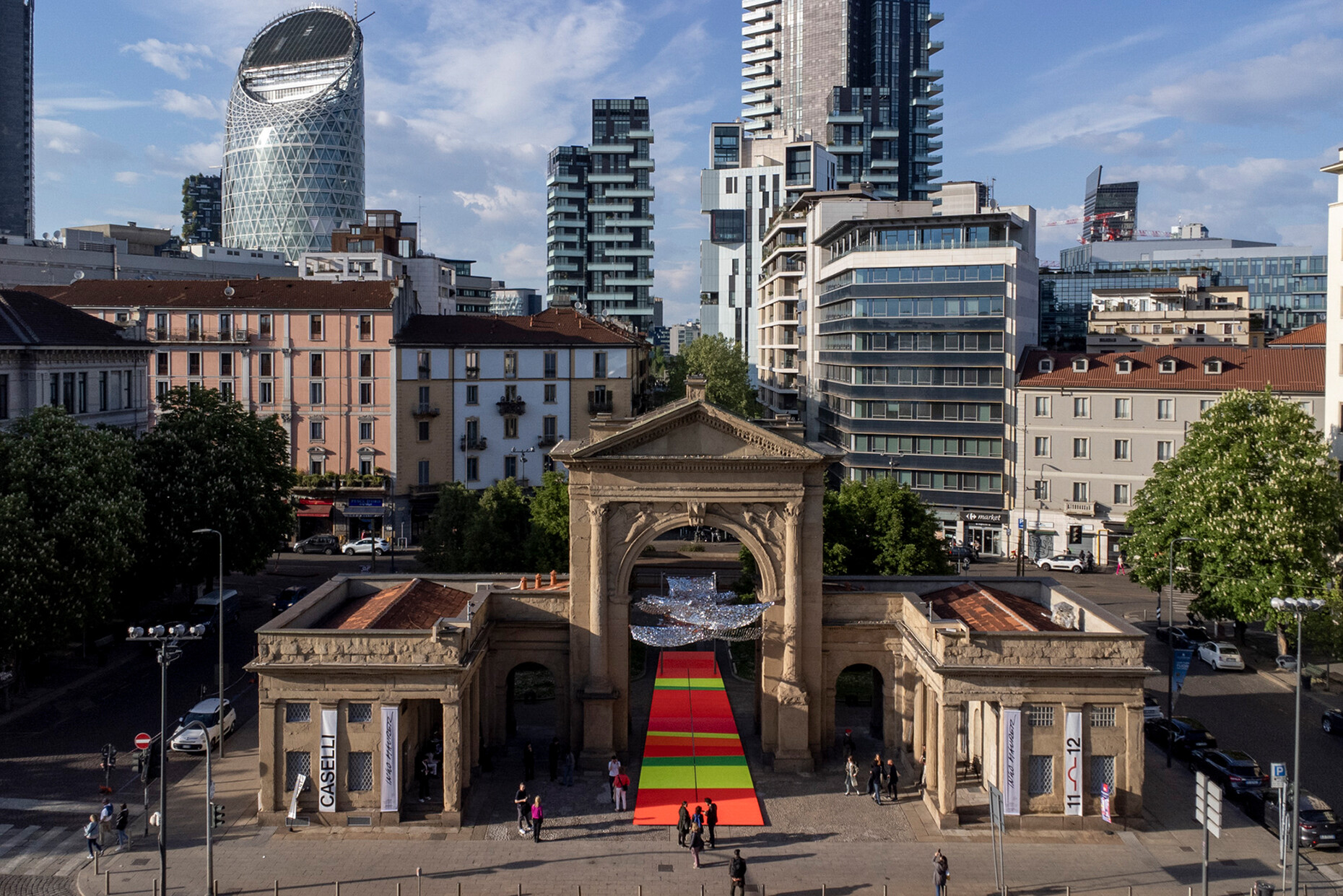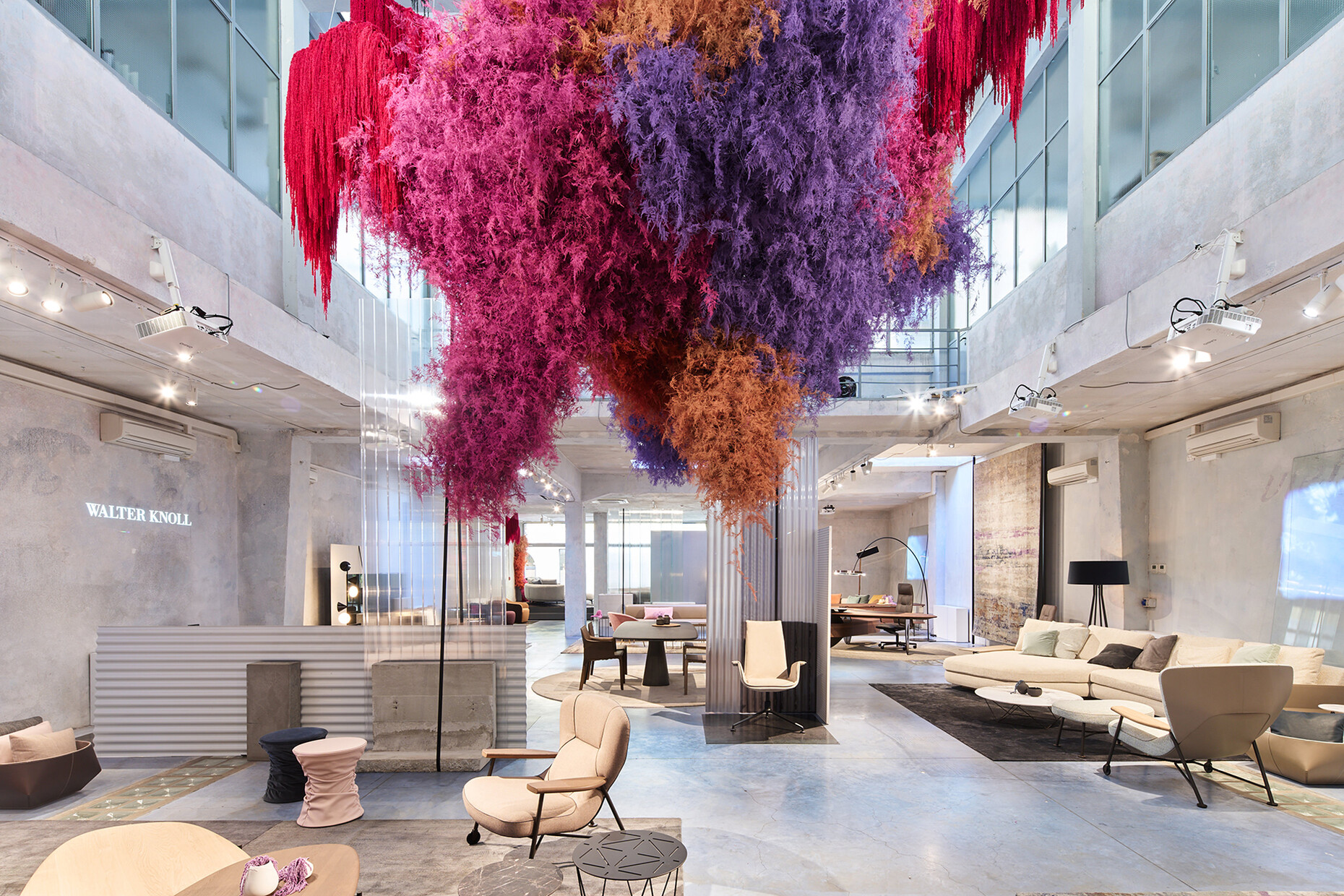REVIEW – SALONE DEL MOBILE & MILAN DESIGN WEEK 2023
Back to the future
If a furniture fair can give a comprehensive answer to the pressing questions of the industry, it is the leading international fair for the furnishing and design industry, the Salone del Mobile.Milano. Back in the traditional April as the month of events, the team led by President Maria Porro presented this year's result from April 18 to 23, 2023: the exhibitions on the lower level were compactly bundled, which significantly shortened the distances for the numerous visitors. Likewise, the layout for the Euroluce light biennial, which could not take place since 2019 due to pandemic, underwent a change on the part of Studio Lombardini22 – in favor of a dynamic, open structure, with compact stands made of plywood in each case and a free routing that offered visitors plenty of opportunities to move through the halls with squares and alleys. The research-based design studio Formafantasma had also designed modular architectures for the exhibition, which featured selected works by architects and designers Nanda Vigo and Umberto Riva, among others. An ideal backdrop for the extensive talk program was provided by their "Aurore" arena, a centrally located area with a homely seating and lounging landscape. During breaks, this also gave guests the option of experiencing an atmospheric color spectacle shown on large-format screens on the ceiling. In addition to the exhibition design, Formafantasma also created a critical reflection in the form of an abstract film that questions the transformation of light from a natural phenomenon into a human-controlled technology: "'Aurore' is a functional space and also an installation with a critical perspective. We address how design can be an expression of justice and social, cultural development, but also how technology becomes a tool for economic growth," said Andrea Trimarchi, one of the two founders of Formafantasma.
Part of Euroluce Halls 13 to 15 was the SaloneSatellite show under the theme "Design Schools – Universities / Building the (Im)Possible. Process, Progress, Practice." Among the products and projects on display were impressive woodwork by designers Hemmo Honkonen and Antrei Hartikainen, and "Palm" shelving and seating by Aioi Design, which are formed by stacking identical pieces of pulp mold. The furniture can thus be mass-produced at low cost and can be completely recycled. The concepts of the students from the Industrial Design Department of the University of Applied Arts Vienna, led by Prof. Stefan Diez, rethought elements of architecture to reduce the ecological footprint of urban life. First place in the 2023 SaloneSatellite Award went to the Honoka group for their "Tatami Refab Project." In this project, they use traditional tatami mats made of rush grass as well as biodegradable resin as a basis to produce contemporary furnishing objects such as furniture or lamps with the help of a 3D printer. Stylepark had the great honor to be part of the jury for the SaloneSatellite Awards for the second time, this year chaired by curator and author Paola Antonelli. In parallel, the special exhibition "Sate-light. 1998-2022 SaloneSatellite young designers" showed how successful SaloneSatellite has been as a springboard for young designers since its founding by Marva Griffin and lined up a variety of lights designed by participants as well as realized in cooperation with manufacturers. Thematic transitions were thus created between the exhibitions of SaloneSatellite and Euroluce.
"The City of Lights" was the motto of the Light Biennale and the large crowds in the halls once again made it clear how much this was missed by the trade public and how high the general need continues to be to take advantage of the wide range of offers at the Salone del Mobile.Milano to inform themselves about the status quo, to network and to exchange ideas. This year, interdisciplinary collaboration in the industry was also highlighted: From the curated shows on the part of Beppe Finessi to the numerous talks organized by Annalisa Rosso, Euroluce offered a kaleidoscope of design, architecture, art, photography, science, technology and literature. With a bistro and upscale restaurant by Piero Lissoni, culinary delights were not neglected either.
One of the most impressive new luminaires this year is the "Cono di Luce" pendant lamp by Ron Arad for Lodes: a slender truncated cone shape made of heat-resistant Pyrex glass, inside which a circuit board with many small LEDs has been placed. To realize the design of the first collaboration with Ron Arad, the Lodes team developed a novel production method and an electrical circuit with a total of more than 200 LED chips. The printed circuit board (PCB) is the result of a process involving 33 different steps: an aggregate of several layers of fiberglass and copper for the electrical circuits of the LED chips, which by nature has translucent and matte areas. On a fiberglass plate, which is extremely thin, flexible and insulating, a copper track is distributed in this process, which acts as a conductor of electrical polarity and allows the LEDs to emit light. The structured design of the circuit board thus also shapes the aesthetics of the luminaire. Flos showed "Black Flag" by Konstantin Grcic, a wall lamp that can be extended to 3.5 meters and consists of one vertical and three horizontal rods, designed to take up a minimum of space when closed and provide maximum illumination when open. Marset presented "Fris" by Joan Gaspar, a collection of wall-ceiling and pendant lamps whose light can be turned in any direction thanks to a flexible glass tube. The system with different mounting and suspension accessories also makes it possible to design individual light structures. ClassiCon offered a new version of Sebastian Herkner's "Plissée Pendant Lamp" as a pendant light that looks like a sky lantern thanks to the fabric effect of the hand-blown glass. The company also presented the "Forma" table lamp by Christian Haas, who translates the classic desk lamp of the 1940s and 1950s into a solid wood version in ash or walnut. The large, slightly inclined shade with an inserted satinized glass pane and an integrated, dimmable LED ring in warm white light color provides pleasantly glare-free light.
Luceplan presented "LIIU" by Vantot, a light as flexible hanging lamp system with a basic structure of electrified metal cables anchored to the ceiling and kept in constant tension by counterweights. Thanks to the two light arms that support the head of the lamp and at the end of which there is a spiral, they can be attached to the cables. The luminaires can also be moved along the electrified cables depending on the task. Meanwhile, with distribution through a conical diffuser, the lighting is pleasantly soft. Yomei, in cooperation with Ambright and designer Simon Busse, showed at its booth the pendant luminaires "Paris" and a version with a staircase-shaped structure. The models ideally conveyed the wide variance of their base, the slender corpus of Ambright's SparkShapes. Martinelli Luce presented the industrial-looking LED pendant luminaire "Dia" by Simon Schmitz made of glass like "Infinita" by Marta Sansoni, whose central tube can be equipped with different volumes in three different lengths, such as a cylinder, a disc, a bell or a rhomboid. Glass as a material for the luminaire bodies and minimalist, flexible, technically sophisticated systems could be examined in large numbers at Euroluce, as in the showrooms of luminaire manufacturers at Milan Design Week.
In the field of furniture, the call for maximum flexibility was translated into multifunctional surfaces and modular setups: Arper presented "Ralik" by Ichiro Iwasaki, a modular system with six seating components and removable covers in rich colors, consisting of a pouf, seat with backrest and bench, offering many elements that can be combined or separated as needed without tools. The seating elements and associated tables also feature charging stations. The collection is fully dismountable in the spirit of sustainability, as well as made of sustainable materials throughout. Expormim presented the bentwood chair "Loop" by Norm Architects, a design that already has what it takes to become a classic when it is introduced: With a compact size, curved shape and a pleasantly stretchy backrest made of rattan, it offers an elegant multi-purpose chair. Alberto Brogliato and Federico Traverso, meanwhile, have rethought the solid wood chair for Magis, reducing it as much as possible with "Trave." A beam of bent wood serves as the central element, to which the chair legs are attached like two fabric cushions for the seat and back. Several versions can be selected for both the type of wood and the cover. Inspired by the classic Safari Chair, Konstantin Grcic and Hella Jongerius developed the unusual armchair "Twain" for Magis, which resembles a piece of seating furniture from 1001Nights: Ash wood spindles are connected and held in tension by a lashing strap with a ratchet; two strips of leather, tanned without chrome and dyed white or black on the edges, act as armrests. The textile part consists of three layers: two supporting cloths for the seat and the backrest, a cushion that serves as a seat and finally a blanket with four unusual patterns that Hella Jongerius designed especially for the project. The backrest can be changed according to the sitting position.
Brunner cooperated with atelier oï for the first time and presented a groundbreaking prototype from the development of the new room designer "foild": Based on a filigree scissor frame and integrated textile panels, this can be quickly extended from a very space-saving initial situation to the desired length. Both the textile and the metal structure can be customized – in addition to different fabrics, the frame can thus be selected straight, gently curved or in wave form. "OTO" is the result of the first collaboration between Mattiazzi and Studio OE, a collection consisting of a side table, two consoles and a bench in okoumé wood, available in three color finishes. The rectilinear design of the universally usable objects looks like a supportive extension of the architecture, which is given an exciting contrast by soft curves. Multifunctional is also the table "Anemos" by Pio & Tito Toso for Pedrali, which features a clear architectural form: Two separate concrete shifts, gently sinuous to offer a natural dynamic, effortlessly support the tabletop. With a matte finish, this is equally pleasing to the touch.
Concrete and natural stone were two materials that were often seen in surprising structures and thicknesses – as in the table "Tweed Marble" by Garcia Cumini for Zanotta, whose 20-millimeter-thick top of white Striato Olimpico marble, separated into two parts, resembles a beech leaf in both shape and structure. Antonio Lupi presented five washbasins in marble and stone, so far made of Flumood: "Tuba", "Ago85", "Simplo85", "Fusto" and "Albume". Atlas Concorde, in collaboration with Piero Lissoni, presented for the first time a show at Salone del Mobile.Milano and gave a comprehensive insight into the products of the entire family of brands: from the high quality ceramic and porcelain stoneware tiles of Atlas Concorde, to the large format slabs for furnishing elements of Atlas Plan, to the furnishing of bathrooms of Atlas Concorde Habitat.
Another focus of the exhibitors was on looking back – to the roots of their own company, to nature in form, color and material, to a design that exudes the avoidable security and permanence of the "good old days" – with gentle curves in tabletops and chair backs, seating furniture close to the floor, filigree frames and conical feet. This included numerous anniversaries: Richard Lampert celebrated the 30th anniversary on the one hand, and the design of the Eiermann table, which has been successful for 70 years, on the other. Zanotta celebrated the 50th anniversary of DDL-Studio's 1973 clothes rack with the colorful "Sciangai 50" version, while Sancal presented an experimental tribute to the style of the Memphis Group on the occasion of the 50th anniversary and created "Bold", a sculptural table by Studiopepe with irregular outlines from the three basic geometries and an oversized profile. Knoll exhibited Piero Lissoni's "Lissoni Outdoor Collection" in a sustainable booth architecture that resembles a house in Palm Springs and can be completely disassembled and reused. Lissoni chose a linear design and a structure made of aluminum for his two- and three-seater sofas, armchairs, stools and coffee tables. The inspiration for this was the modernist style of the historic Knoll Collection by Richard Schultz from 1966. Pedrali focused its own exhibition on the motto "#PedraliBacktoNature": "This year we celebrate our 60th anniversary, and our beginnings are in the design of outdoor furniture. We have thus realized different scenes where the outdoor elements dialogue with the indoor elements and nature is always present," said Monica Pedrali, CEO of Pedrali. This included a design by Andrea Pedrali, grandson of the founder of the furniture dynasty based in the province of Bergamo: the "Narì" outdoor armchair takes up the elements of the first wrought-iron garden chairs from Pedrali's 1960s collection, combining the solid steel structure with a weather-resistant mesh of extruded PVC with a nylon core wrapped in a fan shape around the armrests and backrest.
A meaningful combination of existing ideas with current technology and today's awareness of a sustainable cycle was also underlined by Paola Lenti with an unconventional flagship store in a former industrial complex in the up-and-coming Maciachini district: a selection of the indoor and outdoor collections were thus shown on 4000 square meters during Milan Design Week. The official opening of the showroom, which in the future will combine architecture, design, art, hospitality and culinary delights into a holistic experience, is planned for the end of the year. The current portfolio of Paola Lenti includes, for example, a new edition of the curved lounger "Linea", one of the first projects to emerge from the collaboration between designer Francesco Rota and Paola Lenti in the early 2000s. The pattern of the cover, on the other hand, dates back to the 1990s, which are currently experiencing a rediscovery in fashion as well as in design. The designer's current "Kiori" seating series, on the other hand, is made of sassafras heartwood and strips of elm heartwood, which, combined with a cork base, are both elastic and robust. Likewise, a gently curved room divider is made of the natural material mix. Object Carpet showed in parallel "Mediterraneo", the first completely recyclable, water-repellent indoor and outdoor carpet collection by Matteo Thun and Antonio Rodriguez, made of recycled polyester. The feel of the carpet is also special, offering a supple surface despite its robust character. Recycling the materials that have already been produced – a way of working that, fortunately, many manufacturers and creatives proclaimed at the Salone del Mobile.Milano and Milan Design Week.
Sustainable stand architecture was offered by Ondaretta, among others, with a design by Note Design Studio in the context of which the minimalist "Supra" swivel chairs from their pen with a one-piece shell made of injection molding were also shown. For the "Ginger" seating and table collection, Sebastian Herkner combined many contrasts into a harmonious overall picture for Ondaretta – rounded forms, voluminous upholstery, clear metal structures and curved wooden shells. Filigree tubular steel frame, generous upholstery: a combination that Hoffmann Kahleyss design translated into the "Marie" chair model for Freifrau. The cover of the back shell is closed with a zipper and screwed onto the frame together with the seat shell. This makes it possible to have the cover changed, and the chair can be disassembled into its individual components at the end of its service life without much effort. As at the previous trade fairs, Midgard opted for an exemplary sustainable presentation that has a museum-like character in its clarity. Arper again impressed with an airy stand architecture made of white fabric panels. Companies that, on the other hand, stuck to the single-use carpeting and the traditional construction of complete living scenarios, at least emphasized the recycling of the materials used in their own production. To what extent this actually takes place is of course difficult to control, but at least it can be stated that the constant and increased demand for a more environmentally conscious way of thinking in recent years across the industry has made an impression on exhibitors.
Artistic installations were also not neglected on the stands of Salone del Mobile.Milano: Cleaf realized a show rotating on its own axis by Bestetti Associati, Lasvit the atmospheric work "Cloud" by Maxim Velčovský. Driade created an exhibition stand with a tunnel in rainbow colors that radiated pure joie de vivre. At Fermob, visitors were allowed to wander through a lovingly created mini-exhibition that represented the seasons. Likewise, many of the showrooms at Milan Design Week were unconventional: Laufen divided the upper floor of the elegant building in Via Manzoni into two parts under the title "How dare you" to provide a stage for both the pure Capsule Collection "LAUFENXNM3" made of stainless steel by the design studio NM3 and the micro-collection of the artist Monique Baumann made of ceramics, for which three of her graphics were transferred to selected pieces of the Kartell by Laufen collection and burned into the ceramic glaze.
Cassina completely immersed the basement of the neoclassical Palazzo Broggi in their signature color of bright red and presented the exhibits in the atmosphere of a Maniac Mansion, which would also have pleased film director Dario Argento: Curated by Patricia Urquiola and Federica Sala, "Echoes, 50 Years of iMaestri" offered a fascinating glimpse into the creative process of design icons such as Vico Magistretti, Gio Ponti, Carlo Scarpa, Le Corbusier, and Charles and Ray Eames, from design sketches to photographs to final products. The division of the show into five sections is based on the book "Echoes: Cassina. 50 Years of iMaestri" by Ivan Mietton, which will be published this year. Fantini presented the Ex.Series collections with one of Piero Lissoni (thanks to his numerous collaborations, the Italian designer was a main character of this year's shows in Milan): Three projects that have been part of the Boffi series for some time and will be part of the Aboutwater catalog from 2023, which is a collaboration between the Boffi and Fantini brands: "Pipe" by design Marcel Wanders, "Eclipse" by Studiocharlie and "Garden" by Piero Lissoni. The scenographic installation offered a mirrored tunnel with a trapezoidal cross-section, which, depending on the time of day, reflected the sunlight many times, like the objects in the room. Zanat presented handcrafted production processes at Teatro Litta under the title "Teatro Zanat: The Art of Creation", parallel to novelties by Jean-Marie Massaud, Monica Förster, Sebastian Herkner and Patrick Norguet, among others.
The Ingo Maurer Design Team made the medieval archway "Porta Nuova" shine with a staging of light, colors and reflection and illustrated how to create a fantastic atmosphere full of joy with simple means: A good 30 meters long fluorescent carpet, was laid through the arch and stretched over it reflective material that reflected the colors of the surroundings. Combined with live music, delicacies from Laila and Nadia Gohar aka Gohar World and seating, the installation quickly became a live event. At the same time, in seven rooms of the gateway's two adjacent annexes, visitors could discover the manufacturer's extraordinary luminaires, such as "pic-a-stic." USM collaborated with social enterprise The Skateroom and artist Claudia Comte to create a limited-edition collection of modular USM furniture with dynamic black-and-white patterns and skateboard art editions. These were exhibited at the legendary bike store Rossignoli.
Occhio offered a multi-sensory product presentation under the title "new horizons - an immersive experience" in the glass pavilion of the magnificent Villa Necchi Campiglio. Under the title "A Creative's Journey," BMW Design provided insights into the creative design process – from a modern sculpture of the exterior design of the 1973 BMW 3.0 CSL to a journey through the various design disciplines using color and material worlds, sculptures, studies and exhibits. Part of this was the "Phygital Experience," an interactive installation that transforms the vehicle model into a dynamic canvas, visualizing how vehicles will interact with people in the future in an emotional and personalized way. Dedon exhibited "Spirit of Design: Inspired by Nature" in the secluded Senato garden, where guests were able to explore both collections and new fiber technologies. Jung immersed visitors in an abstracted world of smart home technology with the installation "Invisible," including free NFT. The show was developed by Prof. Tina Kammer of InteriorPark to make company and product aspects artistically tangible, which otherwise can only be expressed in words. In addition, there were many other event spaces and interdisciplinary exhibitions, such as the independent platform Alcova, which this year activated a new exciting location: the building of the former slaughterhouse Porta Vittoria in Via Molise.
The Salone del Mobile.Milano and Milan Design Week 2023 thus created a multifaceted program that provided a protected space for creativity, reflection and inspiration in the midst of global crises. Many works, especially those by young designers, demonstrated solution-oriented design with an eye on dwindling resources, climate change and inflation. This year, however, the desire for constant safety, for a familiar design that comes from a past time and can easily be romanticised in the rear-view mirror, was translated into objects in addition to the powerful urge for sustainable change. Celebrating the established is certainly not wrong, but it is to be hoped that after the jubilees the industry will focus on the future again.
